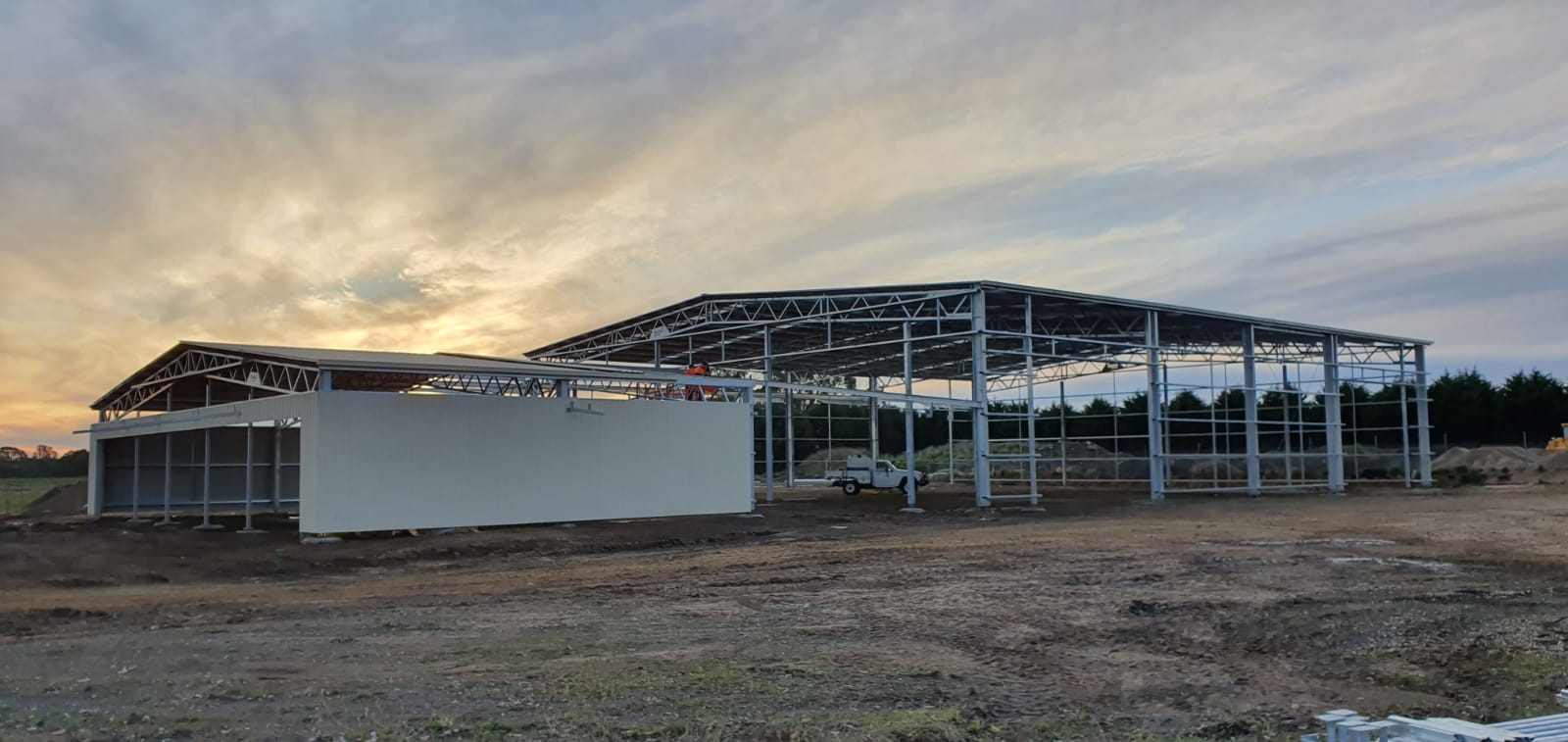The Hot Dip Galvanising Process
Why should steel buildings be hot dip galvanised? Hot-dipped galvanised steel is becoming increasingly popular in all kinds of industries from...

With a solution-focused approach, we collaborate closely with clients and consultant teams to align on scope, time frames, design objectives, and cost. We’re committed to delivering a strong return on your investment. Are you interested in our work in the commercial and industrial sectors?

Our client, a vet and sheep farmer, needed a shearing shed and yard cover designed for efficiency and innovation. Partnering with our team, he collaborated with fit-out providers to create two custom steel structures tailored to his farm’s needs. His farm is now equipped for better working conditions and long-term success.

Providing Industry-Leading Steel Building Solutions
Central Steel Build, committed to innovation, quality, and customer satisfaction, has solidified its reputation as an industry leader. We're revolutionising agricultural structures, and transforming how farmers and producers approach building solutions. If you’re interested in our work in the agricultural sector, read the article to discover how we’re transforming building solutions.

Oritech combined office and warehouse
Oritech Pty Ltd partnered with us to build a modern office and warehouse facility in Mitchell Park, Victoria. The design featured innovative L-shaped tilt panels for both function and style. Using our Pro. building approach, we delivered a durable, cost-effective, high-quality solution. Seamless collaboration ensured the project was completed on time and within budget.

Australian agriculture has been benefiting freely from honeybees for nearly 200 years. The bee’s pollination services are worth several billion dollars per year, but the Australian honeybee is increasingly becoming under threat from a range of different sources over time.

In many parts of the world the honeybee has been losing it’s buzz as unusually high mortality rates have been reported in Western Europe, USA, Japan, China and elsewhere. In some regions of China bees are completely extinct, resulting in pollination needing to be done by hand.
In Australia we have been luckier than overseas countries however, our bees still face a range of threats including pollution, disease, pesticides, intensive agriculture, the introduction of alien species and climate change.

Approximately one-third of global food production requires animal pollination, and 80-90% of this role is played out by honeybees. In Australia, two-thirds of all horticultural and agricultural crops need honeybees for optimal pollination. A lot of fruits such as apples, raspberries and peaches are more productive, produce more attractive fruit and last for longer when they are serviced by honeybees.
Lucerne is much more productive when honeybees are able to promote pollination while almond blossoms rely completely on honeybees. It has been estimated that the value of honeybee-reliant agriculture in Australia is AUD $4–6 billion per year and rising.
| Plants, fruits and crops | Reliance on honeybees for pollination |
|---|---|
| Avocado, almond, onion, sunflower | 100% |
| Cucumber, mango, apple, asparagus, cherry, kiwifruit, rock melon, pumpkin | 90% |
| Apricot, watermelon, other melon, plum | 70% |
| Peach, nectarine | 60% |
| Pear | 50% |
| Orange, canola | 30% |
| Cotton | 20% |
| Grapes, tomato | 10% |

A lot of Australian farmers have a clear idea of what inputs are necessary to grow their products but many are less aware about the role of pollination in maximising yields. Not all crops benefit from or require honeybee pollination but the production of such crops as a percentage of total food production is increasing throughout the world. Pollination by honeybees increases the size, quality and/or stability of harvests and once harvested our sheds help you store, sort, pack and process your produce and improve workflow efficiency on your farm
Since the 1800s, Australian farmers and horticulturalists have relied heavily on wild honeybees for pollination. It is likely that the wild honeybee population is responsible for about 70% of Australian crop pollination. Research is under way not only to help combat threats to the European honeybee but also to encourage other insects, including native bees, to play a greater role in agricultural pollination.
With increased media attention and a dollar value placed on their pollination services over the last decade, governments and the wider public are now beginning to understand some of the issues affecting bees and why it is so important to restore bee health across the planet. You can find out more about the importance of bees and how to help on World Bee Day’s website.
Information credits: science.org.au

Why should steel buildings be hot dip galvanised? Hot-dipped galvanised steel is becoming increasingly popular in all kinds of industries from...

When it comes to agriculture, one of the most important tasks you have is ensuring you have adequate storage for your hay. This is where a hay shed...

Safely storing chemicals on farms is more than just good practice — it’s a legal and operational necessity. Whether you’re using pesticides,...